🙌 Awesome, you're subscribed!
Thanks for subscribing! Look out for your first newsletter in your inbox soon!
Get us in your inbox
Sign up to our newsletter for the latest and greatest from your city and beyond
By entering your email address you agree to our Terms of Use and Privacy Policy and consent to receive emails from Time Out about news, events, offers and partner promotions.
Awesome, you're subscribed!
The best of London for free.
Sign up for our email to enjoy London without spending a thing (as well as some options when you’re feeling flush).
Déjà vu! We already have this email. Try another?
Love the mag?
Our newsletter hand-delivers the best bits to your inbox. Sign up to unlock our digital magazines and also receive the latest news, events, offers and partner promotions.
- Things to Do
- Food & Drink
- Coca-Cola Foodmarks
- Attractions
- Feeling Spontaneous?
- Los Angeles

- Attractions | Sightseeing
- City of London

The Gherkin
Time out says.
St Mary Axe is an insignificant street named after a vanished church that is said to have contained an axe used by Attila the Hun to behead English virgins. It is now known for Lord Foster's 30 St Mary Axe, arguably London's finest contemporary building. The building is known as 'the Gherkin' (and, occasionally, more suggestive nicknames) for reasons that are obvious. On curved stone benches either side of 30 St Mary Axe are inscribed the 20 lines of Scottish poet Ian Hamilton Finlay's 'Arcadian Dream Garden', a curious counterpart to Lord Foster's popular tower. The building is closed to the public apart from very occasionally during events such as Open House London when it is, understandably, a red-hot ticket.
For Open House London 2014, the Gherkin will be open on Saturday September 20 and Sunday September 21, 8am-3pm. Make sure you bring photo ID and be prepared for high security, including bag and body scans. There may also be long queues but there will be an organised system in place allowing groups of 30 people to be admitted every ten minutes for a maximum of twenty minutes. Visitors will have access to the foyer and the top of the domed building.
Been there, done that? Think again, my friend.
Discover Time Out original video
- Press office
- Investor relations
- Work for Time Out
- Editorial guidelines
- Privacy notice
- Do not sell my information
- Cookie policy
- Accessibility statement
- Terms of use
- Modern slavery statement
- Manage cookies
- Claim your listing
- Time Out Offers FAQ
- Advertising
- Time Out Market
Time Out products
- Time Out Offers
- Time Out Worldwide
JavaScript is turned off in your web browser.
Turn it on to take full advantage of this site, then refresh the page.
NRS Healthcare data breach
30 St Mary Axe (The Gherkin)
The distinctive ‘gherkin’ has become a landmark of the London skyline winning the Stirling Prize and London Region Award, RIBA 2004. Its unusual shape contrasts with the vertical lines of nearby towers though, surprisingly, it has only one piece of curved glass - the lens at the top.
London’s first ecological tall building this headquarters designed for Swiss Re is rooted in a radical approach − technically, architecturally, socially and spatially. Forty-one storeys high, it provides 46,400 square metres net of office space together with an arcade of shops and cafés accessed from a newly created piazza. At the summit is a club room that offers a spectacular 360-degree panorama across the capital.
2,000m²/180m, Foster + Partners, 2004.

30 St. Mary Axe: Unveiling London’s Architectural Icon

30 St. Mary Axe – Tallest buildings in London
London, a city adorned with architectural marvels, boasts an impressive skyline punctuated by structures that blend innovation and design seamlessly. Among these towering giants, 30 St. Mary Axe, affectionately known as “The Gherkin,” stands as an iconic symbol of modern architecture and engineering prowess, proudly gracing the cityscape.
The Visionary Design of 30 St. Mary Axe
Designed by the esteemed architectural firm Foster + Partners and completed in 2003, 30 St. Mary Axe showcases a revolutionary approach to high-rise building design. Its distinctive cylindrical shape, characterized by a curved glass facade, defies conventional skyscraper aesthetics, setting it apart as a beacon of architectural ingenuity.
The building’s form isn’t just an architectural quirk; it serves a multitude of purposes. The curved glass facade isn’t merely an aesthetic choice but a functional one, allowing for natural light penetration while minimizing solar gain and optimizing energy efficiency within the structure.
Architectural Elements Redefining Skyline Dynamics
At the heart of 30 St. Mary Axe’s design lies a structural framework that challenges traditional building norms. The innovative diagrid system, a grid of diagonal steel elements, forms the building’s exoskeleton, providing both structural support and architectural intrigue. This system not only enhances the building’s stability but also allows for larger, column-free floor spaces, catering to modern office requirements.
The building’s distinctive shape isn’t limited to its exterior. Inside, its floor plans offer flexible, open spaces, fostering a collaborative and dynamic work environment. The central core design optimizes usable space, offering panoramic views of London while ensuring maximum functionality.
Sustainability at the Core
Beyond its striking aesthetics and structural innovations, 30 St. Mary Axe is a testament to sustainable architecture. The building integrates various eco-friendly features, including efficient heating and cooling systems, rainwater harvesting, and high-performance glass, reducing its environmental impact while enhancing operational efficiency.
The Gherkin: A Symbol of London’s Architectural Renaissance
30 St. Mary Axe, with its bold design and sustainable ethos, represents a paradigm shift in architectural thinking. Its presence in London’s skyline not only captivates the eye but also signifies the city’s commitment to embracing modernity without compromising on environmental responsibility.
In conclusion, 30 St. Mary Axe, “The Gherkin,” stands tall as an architectural marvel that transcends mere functionality. Its innovative design, structural integrity, and environmental consciousness redefine the boundaries of skyscraper construction, leaving an indelible mark on London’s urban landscape for generations to come.

Rethinking The Future (RTF) is a Global Platform for Architecture and Design. RTF through more than 100 countries around the world provides an interactive platform of highest standard acknowledging the projects among creative and influential industry professionals.

The Scalpel at 52 Lime Street: Exploring London’s Architectural Marvel

100 Bishopsgate in London: Unveiling The Architectural Mastery
Related posts.

Wingsweep: A Masterpiece by Kendrick Bangs Kellogg

Fernandez Architecture: Crafting Elegance and Minimalism in Architectural Excellence

Christ Hospital Joint and Spine Center, USA: Revolutionizing Healthcare Architecture

Buerger Center for Advanced Pediatric Care, USA: Elevating Pediatric Healthcare Architecture

The New Hospital Tower at Rush University Medical Center, USA: Redefining Healthcare Architecture Excellence

Teletón Infant Oncology Clinic, Mexico: A Paradigm of Healing Architecture
- Architectural Community
- Architectural Facts
- RTF Architectural Reviews
- Architectural styles
- City and Architecture
- Fun & Architecture
- History of Architecture
- Design Studio Portfolios
- Designing for typologies
- RTF Design Inspiration
- Architecture News
- Career Advice
- Case Studies
- Construction & Materials
- Covid and Architecture
- Interior Design
- Know Your Architects
- Landscape Architecture
- Materials & Construction
- Product Design
- RTF Fresh Perspectives
- Sustainable Architecture
- Top Architects
- Travel and Architecture
- Rethinking The Future Awards 2022
- RTF Awards 2021 | Results
- GADA 2021 | Results
- RTF Awards 2020 | Results
- ACD Awards 2020 | Results
- GADA 2019 | Results
- ACD Awards 2018 | Results
- GADA 2018 | Results
- RTF Awards 2017 | Results
- RTF Sustainability Awards 2017 | Results
- RTF Sustainability Awards 2016 | Results
- RTF Sustainability Awards 2015 | Results
- RTF Awards 2014 | Results
- RTF Architectural Visualization Competition 2020 – Results
- Architectural Photography Competition 2020 – Results
- Designer’s Days of Quarantine Contest – Results
- Urban Sketching Competition May 2020 – Results
- RTF Essay Writing Competition April 2020 – Results
- Architectural Photography Competition 2019 – Finalists
- The Ultimate Thesis Guide
- Introduction to Landscape Architecture
- Perfect Guide to Architecting Your Career
- How to Design Architecture Portfolio
- How to Design Streets
- Introduction to Urban Design
- Introduction to Product Design
- Complete Guide to Dissertation Writing
- Introduction to Skyscraper Design
- Educational
- Hospitality
- Institutional
- Office Buildings
- Public Building
- Residential
- Sports & Recreation
- Temporary Structure
- Commercial Interior Design
- Corporate Interior Design
- Healthcare Interior Design
- Hospitality Interior Design
- Residential Interior Design
- Sustainability
- Transportation
- Urban Design
- Host your Course with RTF
- Architectural Writing Training Programme | WFH
- Editorial Internship | In-office
- Graphic Design Internship
- Research Internship | WFH
- Research Internship | New Delhi
- RTF | About RTF
- Submit Your Story
- The Building A.K.A THE GHERKIN
- The Area A NEW TWIST ON AN OLD FAVOURITE
- Connections A.K.A THE TUBE
- Accommodation THE ULTIMATE FLEXIBILITY
- Gallery ENJOY THE VIEW
- Contact A.K.A THE AGENTS
UNCONVENTIONAL & PIONEERING
A.k.a. 30 st mary axe.
Much like Ziggy Stardust (A.K.A. David Bowie) this ground breaking London landmark has many alter egos.
The Building
FROM SWINGERS TO SEARCYS
A.k.a. an area with a twist.
Explore an ever-entertaining mix of cafés, restaurants and bars.
London underground
A.k.a. the tube.
The ultimate location for convenient connections
Connections
FLEXIBLE accommodation
A.k.a. efficient.
The freedom to plan your office without restriction.
Accommodation
- Hispanoamérica
- Work at ArchDaily
- Terms of Use
- Privacy Policy
- Cookie Policy
The Gherkin: How London's Famous Tower Leveraged Risk and Became an Icon
- Written by Jonathan Massey
- Published on November 05, 2013
How does design change the nature and distribution of risk? In this, the first of four installments examining the Gherkin, the London office tower and urban icon designed by Foster + Partners , author Jonathan Massey introduces the concept of “risk design.” The series , originally published on Aggregate's website, explains how the Gherkin leveraged perceptions of risk to generate profits, promote economic growth, and raise the currency of design expertise.
Designing Risk
Back the Bid. Leap for London . Make Britain Proud. Emblazoned across photomontages of oversized athletes jumping over, diving off, and shooting for architectural landmarks old and new, these slogans appeared in 2004 on posters encouraging Londoners to support the city’s bid to host the 2012 Olympic Games . Featured twice in the series of six posters—along with Buckingham Palace, Nelson’s Column, the Tower Bridge, the London Eye, and the Thames Barrier—was 30 St Mary Axe, the office tower known colloquially as the Gherkin for its resemblance to a pickle, or as the Swiss Re building, after the Zurich-based reinsurance company that commissioned the building and remains its major tenant.

One poster shows the upper half of the Gherkin standing alone against a clear sky. A gymnast vaults above the building, using its smoothly rounded apex as a pommel. The contrasting blues of his uniform echo those of the building’s glazing, while the higher of his legs aligns with one of the spirals that animate the otherwise crisp and symmetrical tower. Constructing affinities between body and building even as it captured attention through a dramatic juxtaposition of scales, the poster associated British athleticism and architecture as complementary manifestations of daring and skill. In representing Games-hosting as a leap akin to vaulting over the Gherkin, it also imagined public investment as the running of a risk. By figuring the building’s dynamic equipoise as support for the gymnast’s virtuosity, it enlisted the Gherkin as evidence that London possessed the expertise and daring to handle that risk—to manage the complex investments and construction projects in infrastructure, architecture, and landscape needed to host an Olympic games.
A forty-one story cylinder that tapers inward at its base and its top, where it peaks in a rounded apex, the Gherkin has been compared to many objects of similar shape, including a pine cone, a bullet, a stubby cigar, a pickle, and a penis.

Upon its completion in 2004, this unusual yet centrally symmetrical form created a distinctive and consistent silhouette widely visible across London . Reproduced in countless advertisements, drawings, photographs, and postcards as well as in films, television shows, video games, and other media, the Gherkin has become one of the world’s newest urban icons, a junior partner to the Eiffel Tower, the Empire State Building, and the World Trade Center. The building has served as a powerful branding instrument for Swiss Re; for British design expertise, in particular that of the building’s architects, Foster + Partners ; and for the London of Tony Blair’s New Labour, Ken Livingstone’s mayoralty, and the 2012 Olympics. [1]
The building is unusual in form, construction, appearance, and servicing, reflecting the work of a large and multidisciplinary team of experts at Foster + Partners and many other firms who developed formidably complex solutions to problems of structure, cladding, and environmental control. The Gherkin won numerous local, national, and international awards for its planning, design, innovation, use of steel, and reinterpretation of the skyscraper type, including the Stirling Prize , granted to the most outstanding building built or designed in Britain over the preceding year. Nearly a decade after it opened, 30 St Mary Axe merits a second look based not on promotional statements and initial critical assessment but on firsthand observation, documentary and archival research, and interviews with developers, owners, planners, architects, consultants, and managers involved in its creation and operation. [2]
Like any icon, the building carries many meanings. As the Back the Bid poster suggests, prominent among these are risk and its management. Most generally, “risk” denotes the effect of uncertainty on objectives. More commonly, the term describes the quantification of uncertainty through the probabilistic calculation of likelihood for any kind of negative outcome. Risk was once a technical concept specific to maritime insurance. In the coffee houses and early exchanges of London ’s nascent financial district it described the commodity that insurers sold and shippers bought to manage the economic danger posed by the uncertain conditions of travel by sea. As capitalism, with its dynamic of continual change, introduced ever more uncertainty into daily life ashore, over the course of the 19th century risk became part of broader Anglo-American economy and culture. Once located exclusively in nature, risk came to be recognized as a dimension of human conduct and society. Assuming risks became part of the freedom and self-mastery that characterizes modern liberal subjectivity. [3]
The expanding corporate economy rationalized contingency by generating new financial instruments of risk management: savings accounts; markets in bonds, futures, and stocks; insurance policies. In the 20th century, advanced industrial nations socialized certain kinds of risk through regulation, state health coverage, and social insurance. In constituting the nation as a risk community, these measures diminished the prevalence of risk as a framework for individual action. Since the 1970s, however, these large-scale risk communities have weakened and responsibility for risk management has increasingly returned to individuals and corporations. Sociologists and political theorists have identified risk as a major currency of governance and self-governance in neoliberal society. [4]
Since it entails imagining uncertainties and projecting potential futures, risk is always in some sense imaginary. It is “a construction of an observer,” in the words of sociologist Niklas Luhmann. [5] The unique design of 30 St Mary Axe addresses the ways we imagine the risks associated with climate change, terrorism, and financial globalization. Spiraling atriums with windows that open to allow natural ventilation suggest that innovative design can help highly technological societies use less energy and slow down potentially catastrophic human-induced climate change. Protective barriers, security cameras, and a diagrid structure enclosing shops along a public arcade and plaza suggest that resilient design can secure the open society by making even a prominent terrorism target accessible and welcoming. A handsome new skyscraper in the City of London , the quasi-autonomous financial district at the heart of the British capital, suggests that quality design can enlarge the supply of prestige office space for global businesses without jeopardizing the visual appeal of London’s townscape for residents and tourists.
The Gherkin’s prominence as an urban icon stems in part from its success at engaging what we might call risk imaginaries: the discourses, representations, and practices through which we understand and conceptualize risks. For reinsurance companies, architects, and urban governance coalitions alike, risk presents opportunity for reward. The Gherkin reimagined salient risks so successfully that it seemed to diminish the likelihood of dreaded outcomes: flooding drowns London ’s streets; bombings raise insurance premiums to prohibitive levels; scarcity of prestige office space sends multinationals to Frankfurt. By seeming to show that design could manage risks posed by climate change, terrorism, and financial globalization, the Gherkin leveraged perceptions of risk to generate profits, promote economic growth, and raise the currency of design expertise. In the process, it changed the social construction and impact of those risks.
By reshaping salient risk imaginaries, the building mediated significant changes in the City of London ’s spatial form, economy, and governance. The Gherkin’s development established a new cluster of branded high-rise office towers that expanded economic activity in London’s financial district by changing its physical and urban character. Its planning and design provided a framework for revisions to planning regulations that favored the interests of landowners, developers, and multinational financial services firms over those of heritage conservationists—changes linked to a restructuring of governance that diminished the autonomy of the City Corporation, the City’s distinctive and traditionally insular government. The design and construction of 30 St Mary Axe are a smaller-scale instance of what Arindam Dutta calls “metaengineering”: the design of entire economies through intertwined architectural, urban, and policy intervention. [6]
Design is a complex practice that involves intuition, aesthetic judgment, and convention along with considerations of technology, construction, law, finance, and many other factors. Foregrounding the role of risk and its management in the design of the Gherkin shows how the distinctive features that made this building an icon were overdetermined by their efficacy at engaging the risk imaginaries associated with climate change, terrorism, and financial globalization. As its multiple risk management efficacies converged into a single design, they made the building the mediator of a new risk management regime. By mediation I mean that the building manifests broader forces in political economy and that in doing so it realizes, shapes, and conditions those forces—giving them their specific character and quality as it brings them into existence. Architecture is not simply generated by economics and politics. A medium for production and everyday life, it reciprocally conditions economics and politics as design instantiates power. The Gherkin is not just the marker of transformations in governance through risk; it has also been an agent in those transformations. Examining the building through the lens of risk highlights the agency of design in mediating change.
Future installments of this serialized article will examine in turn how the Gherkin engaged the risk imaginaries associated with climate change, terrorism, and globalization.
Architect and historian Jonathan Massey is Laura J. and L. Douglas Meredith Professor for Teaching Excellence at Syracuse University, where he has chaired the Bachelor of Architecture program and the University Senate. A founder of the Aggregate Architectural History Collaborative and co-editor of its online journal, Massey is deeply engaged in shaping the ways we research architecture and its history. His book Crystal and Arabesque (University of Pittsburgh Press, 2009) showed how American modernist architects engaged new media, audiences and problems of mass society. His work on topics ranging from ornament and organicism to risk management and sustainable design has appeared in many journals and essay collections, including Governing by Design: Architecture, Economy, and Politics in the 20th Century (University of Pittsburgh Press, 2012). Diagram/Gif by Andrew Weigand. Andrew Weigand is a young New-York-based designer focused on how design affects the social and civil support systems underlying society. He operates at the intersection of public space with art, ecology, and infrastructure, working collaboratively across scales ranging from didactic graphics to architecture, urbanism, and landscape. Recent projects include a proposal for an infrastructural park in Queens, a habitat for meditation, furniture for an art education facility, a summer art pavilion, and a variety of illustrations. Cite this piece as Jonathan Massey, “Risk Design,” The Aggregate website (Transparent Peer Reviewed), http://we-aggregate.org/piece/risk-design .
1 Critics and scholars have examined the iconographic resonances of 30 St Mary Axe, notably in Charles Jencks,The Iconic Building (New York: Rizzoli, 2005), 185-193; Jencks, “The Iconic Building Is Here to Stay,” Hunch11 (2006-07 Winter): 48-61; Jencks, “The Cosmic Skyscraper,” in Norman Foster Works5, ed. David Jenkins (Munich: Prestel, 2009), 538-545; Alejandro Zaera-Polo, “30 St. Mary Axe: Form Isn’t Facile,”Log4 (Winter 2005): 103-106; and Sylvia Lavin, “Practice Makes Perfect,” Hunch11 (2006-07 Winter): 106-113. Zaera-Polo has developed an affect-based reading of the building in “The Politics of the Envelope,”Log13-14 (Fall 2008): 193-207; “The Politics of the Envelope, Part II,” Log16 (Spring/Summer 2009): 97-132; and “The Politics of the Envelope: A Political Critique of Materialism,” Volume17 (November 2008): 76-105. The most comprehensive account of the development, planning, design, construction, and reception of 30 St Mary Axe is Kenneth Powell, 30 St Mary Axe: A Tower for London(London: Merrell, 2006); see also Building the Gherkin, dir. Mirjam van Arx (London: British Film Institute, Koninck Films, and Channel Four, 2005) DVD, 52 min. On urban icons, see Philip J. Ethington and Vanessa R. Schwartz, “Introduction: An Atlas of the Urban Icons Project,”Urban History33:1 (2006): 5-21
2 The analysis developed in this paper is based on firsthand observation, extensive reading in the architectural and general press; archival research, including research in the archives of Foster + Partners ; and interviews with many of the architects, consultants, developers, owners, and managers of 30 St Mary Axe, including: City of London planners Peter Wynne Rees (24 October 2011) and Annie Hampson (24 October 2011); development team members Carla Picardi, formerly of Swiss Re (22 September 2011), Keith Clarke, formerly of Trafalgar House / Kvaerner / Skanska (28 September 2011), and Sara Fox, formerly of Swiss Re (5 October 2011); current or former Foster + Partners staff Hugh Whitehead (27 September 2011), Xavier de Kestelier (27 September 2011), Rob Harrison (6 October 2011), Alistair Lazenby (18 October 2011), Robin Partington (3 October 2011), and Michael Gentz (12 October 2011); consultants Sinisa Stankovic of BDSP Partnership (27 September 2011), Matthew Kitson of Hilson Moran (7 October 2011), Richard Beastall of TP Bennett (19 October 2011), Mark Major of Speirs + Major (29 September 2011), Richard Coleman of Richard Coleman Citydesigner (3 October 2011), and Barnaby Collins, formerly of Montagu Evans (12 October 2011); owners and managers David Gibson of IVG UK (27 September 2011), facilities manager Richard Stead (27 September 2011), Simon Laker and David Binder of Evans Randall (28 September 2011). Other experts interviewed include Gordon Woo of RMS (26 September 2011), and Guy Nordenson of Guy Nordenson and Associates (27 October 2011). For assistance in conducting research at Foster + Partners, I thank Katy Harris, Rebecca Roke, and especially Karyn Stuckey.
3 The definition of risk as “the effect of uncertainty on objectives” is from International Organization for Standardization, ISO 31000:2009 Risk Management—Principles and Guidelines (Geneva: ISO, 2009).
4 Ulrich Beck, Risk Society: Towards a New Modernity (Thousand Oaks, CA: Sage, 1992); and Ulrich Beck, Anthony Giddens, and Scott Lash, Reflexive Modernization: Politics, Tradition, and Aesthetics in the Modern Social Order (Palo Alto, CA: Stanford University Press, 1994); Nikolas Rose and Peter Miller, “Political Power beyond the State: Problematics of Government,” British Journal of Sociology 43, no. 2 (June 1992): 173–205; Louise Amoore and Marieke de Goede, eds., Risk and the War on Terror (London: Routledge, 2008); Richard V. Ericson, Aaron Doyle, and Dean Barry, Insurance as Governance (Toronto: University of Toronto Press, 2003); and Tom Baker and Jonathan Simon, eds., Embracing Risk: The Changing Culture of Insurance and Responsibility (Chicago: University of Chicago Press, 2002). For additional theorizations of risk, see Jonathan Levy, Freaks of Fortune: The Emerging World of Capitalism and Risk in America (Cambridge, MA: Harvard University Press, 2012), esp. 1–6; Francois Ewald, “Two Infinities of Risk,” in Politics of Everyday Fear, ed. Brian Massumi (Minneapolis: University of Minnesota Press, 1993), 221–228; and Caitlin Zaloom, “The Productive Life of Risk,” Cultural Anthropology 19, no. 3 (2004): 365–391.
5 Niklas Luhmann, Modern Society Shocked by Its Risks, Social Sciences Research Centre Occasional Paper 17 (Hong Kong: University of Hong Kong, 1996), 5.
6 Arindam Dutta, “Marginality and Metaengineering: Keynes and Arup,” in Governing by Design: Architecture, Economy, and Politics in the Twentieth Century, ed. Aggregate (Pittsburgh: University of Pittsburgh Press, 2012), 237–267.
- Sustainability
世界上最受欢迎的建筑网站现已推出你的母语版本!
想浏览archdaily中国吗, you've started following your first account, did you know.
You'll now receive updates based on what you follow! Personalize your stream and start following your favorite authors, offices and users.

- Virginia Beach
- History & facts
- Famous people
- Famous landmarks
- AI interviews
- Science & Nature
- Tech & Business
Discover something new everyday
Famous places
- Food & Drinks
- Tech & Business
Top Facts about the Gherkin in London

The Gerkin semi aerial view- by Paste - Wikimedia Commons
Read Next →

28 things you probably didn’t know about Sacre-Coeur basilica in Paris

Best Theme Parks and Attractions in and Around Paris

The Best Way to Visit the Paris Catacombs
1. the gherkin in london was built after a bombing.

Gherkin building in the background- by Fred Romero- Wikimedia Commons
2. The Gherkin in London has been sold severally
3. the gherkin in london features the baltic exchange memorial glass.

Stained glass window from Baltic Exchange- by Heidi De Vries- Wikimedia Commons
4. The Gherkin in London houses diversified entities
5. the gherkin in london is fitted with passive solar heating.

The Gerkin semi aerial view- by Paste – Wikimedia Commons
6. The Gherkins windows are automated
7. the gherkin in london is an ideal spot for events.

Inside Gherkins top floor- by Geekchic- Wikimedia Commons
8. The name ‘Gherkin’ was used for the building before launch

Gherkin entrance- by Cristian Bortes- Wikimedia Commons
9. The Gherkin’s contractors are renowned

Close- up of the Gherkin at night- by CGP Grey- Wikimedia Commons
10. The Gherkin in London’s height posed a concern for airplanes
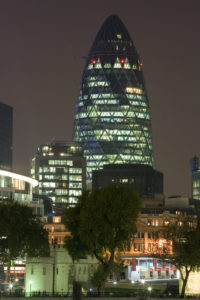
Gherkin at night- by Diliff- Wikimedia Commons
Planning a trip to Paris ? Get ready !
These are Amazon’s best-selling travel products that you may need for coming to Paris.
- The best travel book : Rick Steves – Paris 2023 – Learn more here
- Fodor’s Paris 2024 – Learn more here
Travel Gear
- Venture Pal Lightweight Backpack – Learn more here
- Samsonite Winfield 2 28″ Luggage – Learn more here
- Swig Savvy’s Stainless Steel Insulated Water Bottle – Learn more here
Check Amazon’s best-seller list for the most popular travel accessories. We sometimes read this list just to find out what new travel products people are buying.
Christine M
Discover Walks contributors speak from all corners of the world - from Prague to Bangkok, Barcelona to Nairobi. We may all come from different walks of life but we have one common passion - learning through travel.
Whether you want to learn the history of a city, or you simply need a recommendation for your next meal, Discover Walks Team offers an ever-growing travel encyclopaedia.
For local insights and insider’s travel tips that you won’t find anywhere else, search any keywords in the top right-hand toolbar on this page. Happy travels!
Hello & Welcome

Popular Articles

Top 20 Streets to See in Paris

Paris in two days

Top 15 Things to do Around the Eiffel Tower

The Best Way to Visit Paris Museums

Top 15 Fashion Stores in Le Marais
Visit europe with discover walks.
- Paris walking tours
- Montmartre walking tour
- Lisbon walking tours
- Prague walking tours
- Barcelona walking tours
- Private tours in Europe
- Privacy policy
© 2024 Charing Cross Corporation

30 St Mary Axe
- Initiatives

© Phil Oldfield

© Mark CH Thompson

© CTBUH-Toby Phillips

© Daniel Taylor

© Steven Henry

- CTBUH Drawing
You must be a CTBUH Member to view this resource.
Architectural:

Above Ground
Below ground, official name, other names.
The Gherkin, Swiss Re Tower
United Kingdom
30 St. Mary Axe
Structural Material
Official website.
179.8 m / 590 ft

Floors Above Ground
Floors below ground, # of parking spaces, # of elevators, top elevator speed.
64,470 m² / 693,949 ft²
- By Location
Construction Schedule
Construction Start
Usually involved in the front end design, with a "typical" condition being that of a leadership role through either Schematic Design or Design Development, and then a monitoring role through the CD and CA phases.
Foster + Partners
Structural engineer.
The Design Engineer is usually involved in the front end design, typically taking the leadership role in the Schematic Design and Design Development, and then a monitoring role through the CD and CA phases.
The Peer Review Engineer traditionally comments on the information produced by another party, and to render second opinions, but not to initiate what the design looks like from the start.
BuroHappold Engineering
Mep engineer, hilson moran partnership ltd., other consultant other consultant refers to other organizations which provided significant consultation services for a building project (e.g. wind consultants, environmental consultants, fire and life safety consultants, etc)., bdsp partnership, material supplier material supplier refers to organizations which supplied significant systems/materials for a building project (e.g. elevator suppliers, facade suppliers, etc)., sika services ag, bury street properties, ivg; evans randall; swiss re, project manager the ctbuh lists a project manager when a specific firm has been commissioned to oversee this aspect of a tall building’s design/construction. when the project management efforts are handled by the developer, main contract, or architect, this field will be omitted., rwg associates.
The main contractor is the supervisory contractor of all construction work on a project, management of sub-contractors and vendors, etc. May be referred to as "Construction Manager," however, for consistency CTBUH uses the term "Main Contractor" exclusively.
Lindner Group
Ctbuh awards & distinctions, 10 year award 2013 winner.
2013 CTBUH Awards
CTBUH Initiatives
Canada event considers “the story of marketing tall buildings”.
20 June 2017 - Event
Ken Shuttleworth: A Journey of Design and Discovery
17 August 2016 - Event
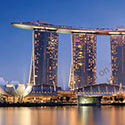
30 October 2017 | London
Quay Quarter Tower: Humanizing the High-Rise
Quay Quarter Tower (QQT) will create a stunning new building on the Sydney skyline that sets new benchmarks in office tower design globally and creates...

29 July 2019
Life Cycle Analysis: Load-Bearing Structures Of High-Rise Buildings in Western Europe
Gerran J. Lankhorst, Royal HaskoningDHV; Karel C. Terwel, IMd Raadgevende Ingenieurs; Janko Arts, Royal HaskoningDHV; Henk Jonkers, Delft University of Technology
The choice of structural system has a big influence on the environmental impact of structural materials in tall building design. This paper provides a comparison...
Global News

30 July 2020
CTBUH In The Media: The Future of Skyscrapers: A Mile High, Slimmer Than Ever and Made from Wood
History does not want for dizzying fantasies of tall buildings. From the Tower of Babel onwards, humanity has dreamed of ever-more wondrous skyscrapers, whether we...
About 30 St Mary Axe
The inaugural winner of the CTBUH 10 Year award, 30 St Mary Axe (The Gherkin), helped to define a modern, open, and progressive image for one of the world’s oldest financial centers and set a benchmark in architectural quality for a new generation of tall buildings. The Gherkin has also been extraordinarily embraced by the public. In 2012, 3,000 people attended the Open City event to look inside, some queuing from 2am, with twice that number turned away. As well as appearing on a first-class stamp, the tower has been used extensively in the promotion of London through advertising, notably as the symbol of London on Olympic bid posters. The building is not only a cultural success, but a commercial one, consistently commanding higher rents than its peers in the City. Thus, the Gherkin more than satisfies the conditions for “contribution to culture / iconography.” Under the engineering performance heading, the building’s tapering form and diagonal bracing structure have afforded numerous benefits that continue today: programmatic flexibility, naturally ventilated internal social spaces, and ample, protected public space at the ground level. The Gherkin has performed exceptionally well in high winds – its robust aerodynamic form counteracts the movement that would otherwise be felt in a building of its height. Environmentally, this form, which slims toward the base and the apex, creates external pressure differentials that are exploited to drive a system of natural ventilation during the summer months, and enabled the creation of a generous, comfortable plaza at street level, protected from high winds by the tower’s form. The Gherkin’s accommodating structure has had follow-on benefits in the internal environment and occupant satisfaction category. Column-free floor plates, and a fully glazed façade open the building to light and views. Atria between the radiating fingers of each floor link vertically to form a series of informal break-out spaces that spiral up the building. As the occupancy has shifted from sole tenant to more than 14 firms, these “green lungs” have continued to provide valuable internal social space within the dense medieval street pattern of London. Six radial fingers of accommodation on each floor, with light wells between, combine the benefits of both curvilinear and rectilinear configurations, maximizing the proportion of naturally lit office space. The geometry of the tower demanded an innovative system for the fabrication of individual cladding panels, due to the high level of variation. The 3D computer model of the system was linked directly to the production line, with major implications for the subsequent construction of complex buildings around the world. The design placed a high priority on flexibility. Every possible configuration within the building, from cellular offices to entirely open plan floors, persists today. The widening and slimming profile generates a variety of floor plates that can respond to different sectors and markets. The building is exemplary in terms of environmental and energy performance. The natural ventilation system operates by importing external air into the building through building management system (BMS)-controlled, motorized perimeter windows placed in each of the six lightwells. The adoption of natural ventilation varies, depending on tenant layout and requirements. Approximately 50 percent of occupants currently use the system. An active, ventilated facade is used across the whole building. This comprises a low-emissivity, double-glazed clear external unit to the outside and a single-pane interior glass, separated by a ventilated cavity. Within the cavity are solar control blinds operated by the BMS. A proportion of office extract air is passed through the facade cavity, which takes the intercepted heat reflected by the blinds from the facade back to the outside via on-floor air handling units. This minimizes solar gain in the offices and makes the façade effectively part of the office extract system. The pitch angle of the blinds is fixed by individual, BMS-controlled dedicated motors to an optimum position to reduce solar gain within the office spaces at all times, while maximizing light transmission through the gaps in the blinds. Ten years on, this system is operational and effective in providing user comfort, while reducing energy demand. The Gherkin is not just an icon; it also provides a contribution to the urban realm beyond itself. The outdoor space is another great success of the project, where the building’s contribution to the city has been most evident: the plaza is full of people in the summer, with food markets, city events and a dynamic arts program illustrating its success.
Monthly Video Series
Video interviews, conference presentations, awards symposium & dinner videos, ctbuh leader presentations & meetings, other videos.
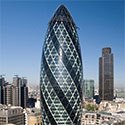
19 October 2016 | London
From San Diego to Guangzhou: The Story of Marketing Tall Buildings
One of the keys to attracting buyers and tenants for a contemporary tall building is a succinct marketing strategy and a robust understanding of how...

27 October 2015 | London
Interview: Cormac MacCrann
Cormac MacCrann of Canary Wharf Group is interviewed by Chris Bentley during the 2015 CTBUH New York Conference at the Grand Hyatt New York. Cormac...

12 June 2013 | London
Constructing Tall Buildings in the European Context
When creating tall buildings in cities with centuries worth of history, does the past take precedence or does the future? For a contractor or developer...
Stepping Stones to 2050
Some sources predict that by 2050 the population will have reached nine billion; six to seven living in cities. This will be a generation of...

11 June 2013 | London
Interview: Building Systems
Vince Ugarow of Hilson Moran is interviewed by Jeff Herzer during the 2013 CTBUH London Conference at The Brewery, London. Vince talks about building systems...

Interview: Heritage and Future of London Tall Buildings
Kamran Moazami of WSP Group is interviewed by Jeff Herzer during the 2013 CTBUH London Conference at The Brewery, London. Kamran discusses the history of...
Matching Occupier and Landlord Needs: Supply and Demand in Tall Buildings
As employee habits increasingly change and alternative workplace solutions become a reality, what do tenants want from their tall buildings and how is this affecting...
The Gherkin: Owning an Icon
30 St. Mary Axe, or the “Gherkin,” as it is more affectionately known, is arguably the most iconic tall building in existence in London. Embraced...
Vital Signs, Vital Statistics – The Impact of Shape on Tower Economics
Shape, more than anything, drives the cost of tall buildings; but to what extent does cost drive shape? The particular constraints of historic environments like...
21 September 2012 | London
Embodied Carbon and High-Rise
This presentation examines the significance of embodied energy and carbon in tall buildings. It presents the life-cycle carbon analysis (including both operational and embodied emissions)...

19 September 2012 | London
Interview: Marketing of Tall Buildings
William Murray of Wordsearch is interviewed by Jeff Herzer during the 2012 CTBUH Shanghai Congress at the Jin Mao, Shanghai. William discusses the marketing of...
Selling Tall: The Branding and Marketing of Tall Buildings
Tall buildings are important brands – creating both value and recognition for the cities and countries that create them. We have a duty to ensure...
04 February 2010 | London
The Re-making of Mumbai: Search for an Appropriate Skyscraper Response
In the early part of 2009, twelve students from the Illinois Institute of Technology, under the tutelage of Professor Antony Wood and working together with...
26 October 2006 | London
How I Squeezed the Gherkin
Peter Wynne Rees, City of London examines three key principles to achieve a successful development when planning a project for a tall building at the...
There are no results for your search query. Please try a different variation.
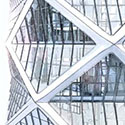
01 December 2016
An Overview of Structural & Aesthetic Developments in Tall Buildings Using Exterior Bracing & Diagrid Systems
Kheir Al-Kodmany, University of Illinois; Mir M. Ali, University of Illinois at Urbana-Champaign
There is much architectural and engineering literature which discusses the virtues of exterior bracing and diagrid systems in regards to sustainability - two systems which...
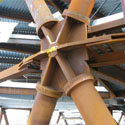
The Emergence of the Diagrid - It’s All About the Node
Terri Meyer Boake, University of Waterloo
The diagrid structural system for constructing tall buildings is a recent invention. Debuting in 2004 with the construction of the Swiss Re Tower in London,...

17 October 2016
Remodel, Recycle or Rebuild? - Addressing the Fire Safety Challenges of Repurposing Skyscrapers
Simon Lay, Olsson Fire & Risk
Some of our established world cities are already facing the challenge of older tall building stock that is no longer relevant to the most commercially...
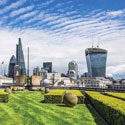
26 October 2015
The Promise of Public Realm: Urban Spaces in the Skyscraper City
Stephan Reinke, Stephan Reinke Architects
This paper will reveal the importance of integrating the Ground Plane, Mid-Level and Rooftop Urban Public Spaces in the City. We will explore the NYLON...
12 June 2013
From “Dry and Safe” to “Tall and Sharp” / Owning an Icon
Kent Gardner, Evans Randall
The owners of two of London’s most significant skyscrapers, Irvine Sellar of the Shard and Kent Gardner of the Gherkin, spoke with CTBUH about the...
21 September 2012
William Murray, Wordsearch
Tall buildings are important brands – creating both value and recognition for the cities and countries that create them. The consequent pressures and responsibilities are...

19 September 2012
Philip Oldfield, University of Nottingham
This paper examines the significance of embodied energy and carbon in tall buildings. It presents the life-cycle carbon analysis (including both operational and embodied emissions)...
01 May 2011
The Importance of Real Life Data to Support Environmental Claims for Tall Buildings
Joana Gonçalves, Universidade de São Paulo (FAUUSP); Klaus Bode, BDSP Partnership
One of the main causes of energy efficiency failures is LEED rewarding projects for their predictions, but not for proving the savings. The operation of...
01 January 2010
Sustainability and the Tall Building: Recent Developments and Future Trends
Mir M. Ali & Paul Armstrong, University of Illinois at Urbana-Champaign
As a major energy consumer, the tall building does not ordinarily conjure images of sustainable design. But a new generation of tall buildings is incorporating...

10 October 2004
A Simplistic or Holistic Approach to Structural Fire Engineering?
Colin Bailey, The University of Manchester
An elemental prescriptive approach, which is simplistic in nature, can be used to design buildings for structural fire safety. This paper presents the background to...

06 August 2019
London Skyscraper in Question as Investor Pulls Out
Asian developer Perennial Real Estate Holdings has dealt a blow to Eric Parry Architects’ approved plans to build the tallest building in the City of...

16 July 2019
Planning Permission for Proposed Tower Rejected by London Mayor
London mayor Sadiq Khan has refused the Foster + Partners designed Tulip Tower saying the 304-meter-tall tourist attraction could harm the city’s skyline. Overturning the...

27 March 2019
Tulip Tower Set for City of London Approval
City of London planning officers have recommended approval for Foster + Partners’ opinion-splitting Tulip on a site next to the Gherkin. The planned 305-meter-tall tourist...
Event Report
Tour report.
20 June 2017
Building up momentum for the CTBUH 2017 Conference in Australia, the CTBUH Canada Chapter held its most recent event at the University of Toronto Faculty Club.
17 August 2016
CTBUH Sydney held a collaborative event with UNSW Built Environment, welcoming British architect Ken Shuttleworth, founder of Make, to Australia.
17 September 2015
Warm Weather Spaces Walking Tours 2015
The CTBUH Urban Habitat / Urban Design Committee organized guided walking tours of 16 cities around the globe, focusing on urban habitats around tall buildings.
23 January 2014
Design, Cost and Return on Investment
The chapter's fifth event included video presentations by Peter Rees, the Chief Planning Officer for London & a case study of The Gherkin by Kent Gardner, its owner.
13 June 2013
30 St. Mary Axe Technical Tour Report
Since its completion in 2004, 30 St. Mary Axe has become a firm favorite, referred to by Londoners as “The Gherkin.” Incorporating multiple green features it set a new standard for high-rise design in London and beyond.
17 July 2011
London Report: Bucking a Western Trend?
Executive Director Antony Wood visited the UK in July for the inaugural meeting of a future CTBUH UK Chapter and other endeavors.
Subscribe below to receive periodic updates from CTBUH on the latest Tall Building and Urban news and CTBUH initiatives, including our monthly newsletter. Fields with a red asterisk (*) next to them are required.
Skyscraper Center site feedback
We are identifying potential improvements to the CTBUH Skyscraper Center database. The first step of this research is to understand the users of the database and what they are looking for. Please take a couple moments to share your feedback.
1. Why did you come to the Skyscraper Center today? *
2. What are you looking for? * This can be a short answer, we want to understand what task you are trying to accomplish.
3. May we ask you a couple follow-up questions after you complete your visit today? If yes, please enter a convenient email we may reach you at and a new tab will open with the follow up survey.
We use cookies to improve your experience on our website. Review our Privacy Policy for more information.

IMAGES
VIDEO
COMMENTS
Located in a vibrant, established commercial core with excellent transport connections — and the Capital's best in food and entertainment. A workplace that's connected, inspiring, healthy and truly unique. Discover the Gherkin. From top left: Helix Restaurant by Searcys, Foster + Partners designed reception. Explore the Gherkin in 360°.
The Gherkin isn't normally open to the public but you can visit Helix restaurant and Iris bar, ... 30 St Mary Axe is covered in 24,000 sq m (2,200 sq ft) of glass, which equates to five football pitches. The Gherkin building is constructed from more than 35km (21 miles) of steel, weighing a total of 10,000 tonnes. ...
Enquiries. 30 St. Mary Axe Management Office. 0207 071 5000. 30 St. Mary Axe London. 30 St Mary Axe, better known by its nickname The Gherkin, is one of the most eye-catching buildings in London.
Glass Ceiling. The Gherkin has 24,000 metres squared of glass, but only one piece of carved glass—the lens at the top. The way the Gherkin is structured, there are six lightwells with 792 mechanised windows behind the dark spirals on the building to help disperse natural light throughout the building. 7,429 panes of glass cover the exterior ...
Historical Tours. from. £49.00. per adult. The area. 30 St. Mary Axe, London EC3A 8EP England. Neighbourhood: City of London. From its ancient past as a Roman trading outpost to its 21st century status as the wealthiest square mile in the world, the financial district known simply as "The City" is one of London's most historic and ...
an address that everybody knows. 30 St Mary Axe is your opportunity. to join a thriving and diverse community of game changers. The available office floors in this suave building have been. fully refurbished to Grade A specification, offering dramatic. workspace that makes a real statement.
The Gherkin, formally 30 St Mary Axe and previously known as the Swiss Re Building, is a commercial skyscraper in London's primary financial district, the City of London.It was completed in December 2003 and opened in April 2004. [10] With 41 floors, it is 180 metres (591 ft) tall [3] and stands on the sites of the former Baltic Exchange and Chamber of Shipping, which were extensively damaged ...
St Mary Axe is an insignificant street named after a vanished church that is said to have contained an axe used by Attila the Hun to behead English virgins. It is now known for Lord Foster's 30 St ...
14,930 reviews. Affectionately nicknamed "The Gherkin" for its unusual shape, the dazzling glass-fronted skyscraper at 30 St. Mary Axe is among London's most distinctive landmarks, looming 590 feet (180 meters) over the City of London financial district. Learn more. 30 St. Mary Axe, London, Greater London, EC3A 8EF.
The distinctive 'gherkin' has become a landmark of the London skyline winning the Stirling Prize and London Region Award, RIBA 2004. Its unusual shape contrasts with the vertical lines of nearby towers though, surprisingly, it has only one piece of curved glass - the lens at the top. London's ...
30 St Mary Axe, infamously known as 'the Gherkin' due to its 3D oval shape, is one of the first landmarks to become visible when you're travelling into London from many different places. The outside of the building consists of 24,000 square metres of glass arranged in diamond-shaped panes. Find the answers to questions during your imaginary ...
30 St Mary Axe (The Gherkin): Our most recommended tours and activities. 1. London: Another Brick in the Wall Self-Guided Audio Tour. Trace London's ancient city wall as it grew from an enclosure around the Roman settlement of Londinium, to the large medieval structure that ringed the bustling city. On this walking tour, you'll see parts of ...
The inaugural winner of the CTBUH 10 Year award, 30 St Mary Axe (The Gherkin), helped to define a modern, open, and progressive image for one of the world's oldest financial centers and set a benchmark in architectural quality for a new generation of tall buildings. The Gherkin has also been extraordinarily embraced by the public.
30 St. Mary Axe - Tallest buildings in London London, a city adorned with architectural marvels, boasts an impressive skyline punctuated by structures that blend innovation and design seamlessly. Among these towering giants, 30 St. Mary Axe, affectionately known as "The Gherkin," stands as an iconic symbol of modern architecture and engineering prowess, proudly gracing the
The Gherkin: An Architectural Guide to 30 St. Mary Axe. Written by MasterClass. Last updated: Sep 22, 2021 • 4 min read. The cucumber-shaped office tower popularly known as "the Gherkin" is one of the United Kingdom's most recognizable modernist buildings.
Enjoy impressive views of The Gherkin during a London Thames River evening cruise or a ride on the London Eye; see the landmark up close on a walking tour of historic London; or combine a visit with nearby London attractions like London Bridge, The Monument, the Tower of London, or St. Paul's Cathedral. View all 15 experiences.
A.K.A. 30 ST MARY AXE. Much like Ziggy Stardust (A.K.A. David Bowie) this ground breaking London landmark has many alter egos. The Building. FROM SWINGERS TO SEARCYS A.K.A. AN AREA WITH A TWIST. Explore an ever-entertaining mix of cafés, restaurants and bars. The Area. London underground
The most comprehensive account of the development, planning, design, construction, and reception of 30 St Mary Axe is Kenneth Powell, 30 St Mary Axe: A Tower for London(London: Merrell, 2006); see ...
The Best Way to Visit the Paris Catacombs. Top Facts about the Gherkin in London. Share 32; Pin . Also known as 30 St Mary Axe, the Gherkin is a modern skyscraper right in the center of London. It was officially opened to the public in 2004 although construction was completed in December of 2013. It is a tall building but not amongst the ...
In this eighteenth video in my Drawing London series, I tell you a little about the history of the 30 St Mary Axe skyscraper. Better known as The Gherkin, 30...
30 St. Mary Axe London We use cookies to deliver and understand how people use our online services and to tailor the advertising you see. For more information, details of the cookies we use and instructions on how to disable them, please see our Cookies policy.
30 St Mary Axe, Birleşik Krallık'ın başkenti Londra'da bulunan bir gökdelendir. [3] Bina, Londra Şehri'nde yer almakta olup 180 metre yüksekliğinde ve 41 kata sahiptir. [2] Aralık 2003 tarihinde tamamlanmış olup Nisan 2004 tarihinde açıldı. [4]Bina, Londra'nın tanınmış bir özelliği haline geldi ve kentin çağdaş mimarinin en tanınmış örneklerinden biridir.
Tours and Tickets to Experience The Gherkin. Discover the grandeur of London aboard the open-top, double-decker bus on this hop-on hop-off sightseeing tour. Choose between 24- or 48-hour ticket options, and design a personal itinerary with stops including Buckingham Palace, Hyde Park, St. Paul's Cathedral and more.
La sommità del 30 St Mary Axe vista dal basso. Nel 1996 la Trafalgar House rese pubblico il progetto per un edificio alto 1200 piedi (370 metri) con oltre 90 000 m 2 di spazio per uffici e una piattaforma panoramica all'altezza di 1000 piedi (305 metri).Il progetto risaltava per la sua forma inusuale, che per qualcuno faceva assomigliare la costruzione ad un cetriolino.
30 St Mary Axe - wieżowiec znajdujący się w City of London, głównej dzielnicy finansowej Londynu, znany również pod nazwą The Gherkin ("Ogórek") lub Swiss Re. Wcześniej w tym miejscu stał biurowiec Baltic Exchange (24-28 St Mary Axe), zniszczony 10 kwietnia 1992 w wyniku zamachu bombowego Irlandzkiej Armii Republikańskiej.
30セント・メリー・アクス(サーティ・セント・メリー・アクス、英名:30 St Mary Axe)は、イギリスの首都 ロンドンの金融中心地である、シティ・オブ・ロンドンのセント・メリー・アクス通り30番地に聳え立つ超高層ビルの名称。
Le 30 St Mary Axe (ou Swiss Re Building) est une construction située dans le quartier d'affaires de la City de Londres en Angleterre. En référence à sa forme, les Londoniens ont pris l'habitude de l'appeler the Gherkin (le « cornichon »). Histoire [modifier | modifier le code] Le bâtiment se trouve sur l'ancien site du bâtiment Baltic Exchange, le siège d'un marché mondial pour les ...
The inaugural winner of the CTBUH 10 Year award, 30 St Mary Axe (The Gherkin), helped to define a modern, open, and progressive image for one of the world's oldest financial centers and set a benchmark in architectural quality for a new generation of tall buildings. The Gherkin has also been extraordinarily embraced by the public.